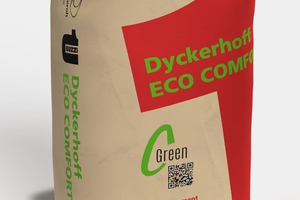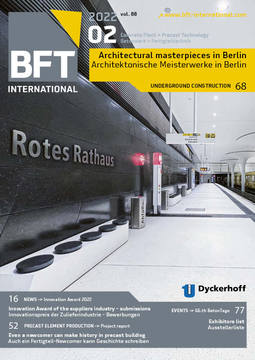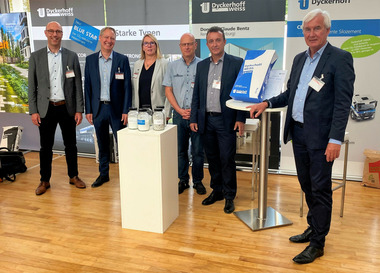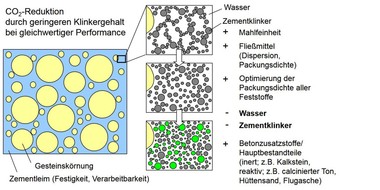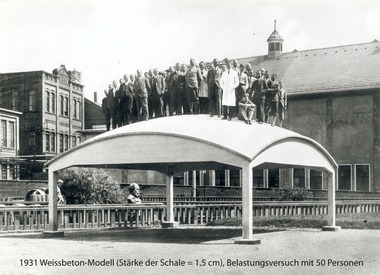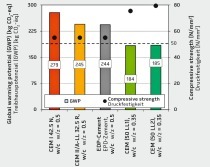Innovation: CO2-efficient Cedur and Eco Comfort cements
In the opinion of leading industrial associations, CEM II/C cements, owing to their low content of burnt clinker, are a crucial approach toward lowering CO2 emissions in building with cement and concrete. In the autumn of 2020, Dyckerhoff was the first German manufacturer granted approval for production of CEM II/C cement by the DIBt. CEM II/C cements achieve the required technical performance, despite a reduced use of clinker. During production, compared to CEM I cement, up to 39 % less CO2 per ton of cement is emitted. Compared to the current status quo of binder mix, CEM II/C cements have the potential to reduce CO2 intensity by 25 %. In order to emphasize CO2 efficiency, CEM II/C cements bear the new Cgreen logo of the Buzzi Unicem Group.
In this way, the cement also contributes to preservation of important resources that can be efficiently used in a CEM II/C cement.

